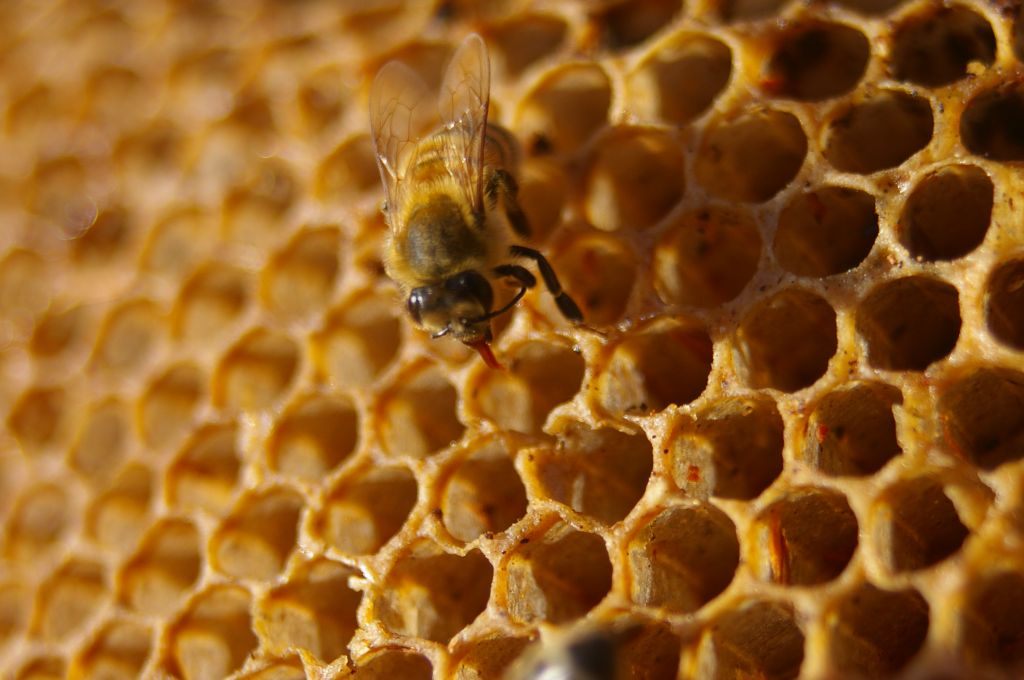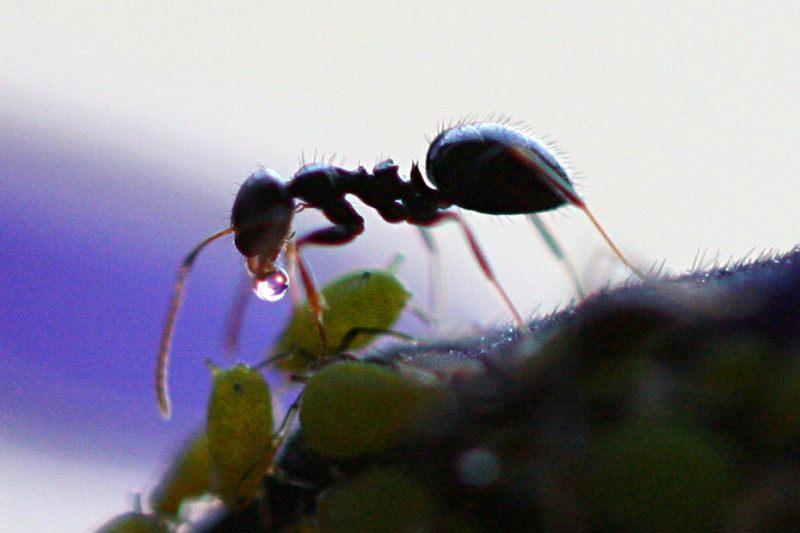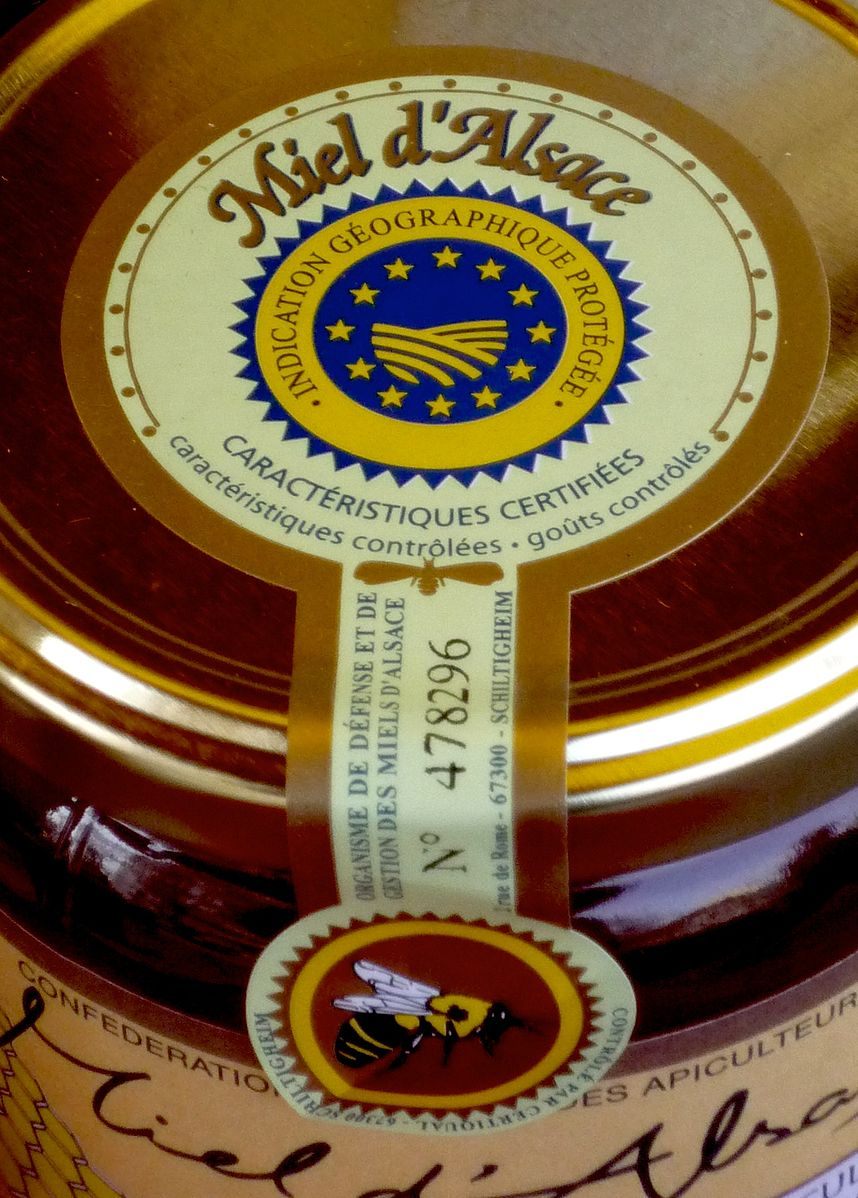Your New Favorite Honey Is Made Out Of Bug Poop and Bee Vomit

A honeybee at work. (Photo: Peter Shanks/Flickr)
In this age of food scares and secret adulterations, when what you put in your mouth is a chemical facsimile of what it’s purported to be, good news: the real stuff is still out there. In fact, depending on your choice of brand there’s more nature in your honey than you may have thought possible. If you’ve ever sprung for a jar of Pacific Coast Cold Packed or a Mediterranean blend, odds are you, like more and more honey enthusiasts around the globe, have filled your tea with honeydew honey: a precise and delicious marriage of tree sap, bee vomit, and bug poop.
Let’s back up. All honey, unless it’s corn syrup disguised in a plastic bear, is basically just bee-regurgitated sweet stuff. Usually, that stuff is nectar, the sugar water produced by plants explicitly so that bees, birds, and other animals will come visit them and spread their pollen around. Forager bees drink the nectar, fully digest enough to give them energy to fly home, and store the rest in a special “honey stomach,” which breaks down some of the sugars and squeezes out water, pollen grains, bacteria, and other excess material. When they get back to the hive, they regurgitate it and give it to the house bees, who swallow it and spit it up over and over before storing it in the comb, where it matures further. According to one expert, “it takes at least 100,000 vomits” to make one pound of the glowing substance we know and love.

A bee, close-up. The honey stomach is located at the front of the abdomen. (Photo: Bartosz Kosiorek/WikiCommons CC BY-SA 3.0)
Though most use nectar, bees can and will go through this process with pretty much anything sugary. Some of their innovations are bad news for beekeepers–in 2012, the prized swarms of Alsace, France started feasting on waste from an M&M factory and producing bright blue, unsellable honey–but sometimes they hit on a new taste sensation. Enter scale insects. These crumb-sized critters live under the bark and leaves of particular plants, and spend all day sucking the sap out of them. The tiny bugs only need the two percent of the sap that is pure protein, so they expel the rest as sticky goop called honeydew. In lean times or places where nectar isn’t available, bees collect this special bug poop and make it into honey.
Honeydew and its transformations were popular long before anyone knew from whence it came. Pliny the Elder, who encountered trees studded with the substance while exploring the hills of Rome, postulated that it was “the sweat of the heavens… or the saliva emanating from the stars.” At least one expert thinks the Biblical “manna” is honeydew, pointing out that the word is similar to “man hu,” which is Arabic for “this is plant lice.” In Titus Andronicus, Shakespeare compared it to tears gathering on the cheeks of a young maiden, and thought, like many of his time, that it was shed by the plants themselves. Even a couple of centuries after 1740, when a French naturalist named René Antoine Ferchault de Réaumur noticed that ants would follow scale insects around to drink their sugary excretions, scientific journals and farmer’s almanacs dedicated entire pages to discussing its provenance.

Bees aren’t the only insects that like honeydew–here, an ant harvests it from an aphid. (Photo: Dawidi/WikiCommons CC BY-SA 3.0)
But the sweet tooth doesn’t wait for science, and by the time a consensus was reached, beekeepers had long been farming the unlikely honey on purpose. In the 1910s, 40 percent of Swiss honey was from fir tree honeydew, which “notwithstanding its greenish-black color… is much esteemed by the population,” according to the 1916 American Bee Journal. Midcentury New Yorkers loved it, though they were coy about where it came from.
Today, honeydew honey is renowned for its “woody, warm aroma,” its low acidity, and its resistance to crystallization. As with other honey types, particular regions produce subvarieties that boast different tastes and properties depending on the terroir–in this case, the particular combination of plant, sucker-bug and bee. Honey forums are swarmed with dealers trying to get ahold of the stuff. Sixty percent of Greek honey is from pine and fir honeydew, and market demand has led some beekeepers to artificially infest trees with scale insects to start the process. This summer, the government of Bulgaria announced a subsidy that would allow beekeepers in the Strandzha Mountains to transform the entire range into what one apiarist is calling “an industrial zone” for honeydew honey production, so that local beekeepers can keep up with orders.

Miel D’Alsace, a prestigious French variety that often contains silver fir, lime tree, and other types of honeydew honey. (Photo: Claude Truong-Ngoc/WikiCommons CC BY-SA 3.0).
It’s a predictable craze–after all, humans are willing to pay top dollar for food that’s already been digested once. There’s the infamous kopi luwak, $30-a-cup coffee made of beans that have passed through Indonesian civet cats, and its supersized descendant, Black Ivory Coffee, which is “processed” by elephants. Even early steps of the GI process are valuable–edible bird’s nests, made of swiftlet saliva, can go for $2,500 per kilogram. Under this logic, honeydew honey–which averages about $20 per 16-ounce jar and has passed through two different species before it reaches your mouth–is really a pretty sweet deal.
Gastro Obscura covers the world’s most wondrous food and drink.
Sign up for our email, delivered twice a week.
























Follow us on Twitter to get the latest on the world's hidden wonders.
Like us on Facebook to get the latest on the world's hidden wonders.
Follow us on Twitter Like us on Facebook